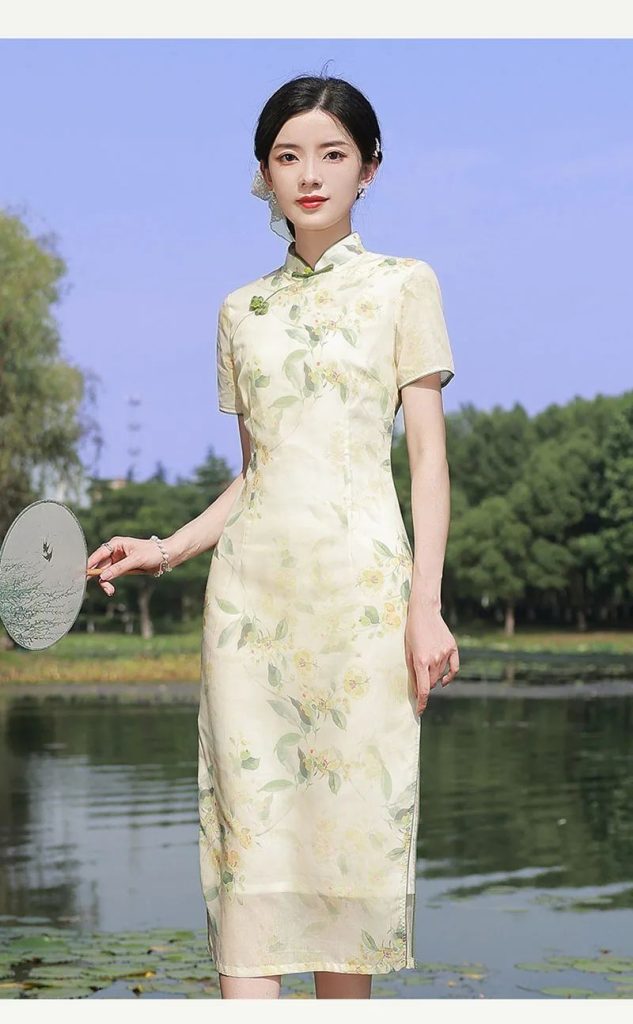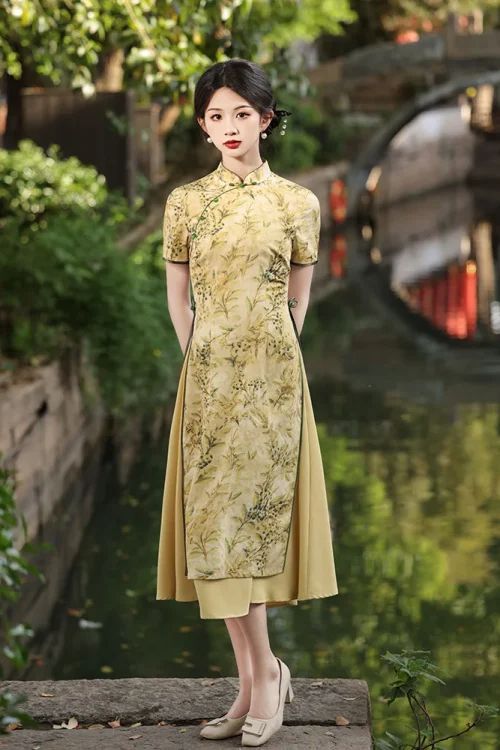The Origins of 旗袍: A Historical Journey
The qipao, an iconic Chinese dress, has a rich and fascinating history that spans centuries. Its origins can be traced back to the Manchu people, who ruled China during the Qing dynasty (1644-1912).
During the Qing dynasty, Manchu women wore a loose-fitting robe called a changpao. This robe was typically made of silk or cotton and featured a straight collar, long sleeves, and a wide skirt. Over time, the changpao evolved into the qipao, which became popular among both Manchu and Han Chinese women.
In the early 20th century, the qipao underwent a significant transformation. Under the influence of Western fashion, it became more form-fitting and began to feature a higher neckline and shorter sleeves. This new style of qipao, known as the “Shanghai qipao,” became a symbol of modernity and sophistication.

During the 1930s and 1940s, the qipao reached the height of its popularity. It was worn by women from all walks of life, from movie stars to housewives. The qipao became a symbol of Chinese identity and was often featured in films and magazines.
After the founding of the People’s Republic of China in 1949, the qipao fell out of favor. It was seen as a symbol of the old regime and was discouraged by the government. However, in recent years, the qipao has experienced a resurgence in popularity. It is now worn by women of all ages and backgrounds, both in China and around the world.
Today, the qipao is a versatile garment that can be dressed up or down. It is often worn for special occasions, such as weddings and festivals. The qipao is also a popular choice for fashion-forward women who want to embrace their Chinese heritage.
Qipao Through the Ages: Evolution and Cultural Significance
The qipao’s evolution from the changpao to the modern silhouette reflects the dynamic changes in Chinese society. As the Manchus imposed their customs on the Han Chinese, the changpao gradually evolved into the qipao, which became a symbol of Chinese identity and femininity. During the Republican era (1912-1949), the qipao underwent a transformation, becoming more form-fitting and stylish. It was embraced by modern women as a symbol of liberation and progress.
The qipao’s popularity continued to soar in the 1930s and 1940s, thanks in part to the influence of Shanghai’s vibrant fashion scene. It became a staple of the “Shanghai chic” aesthetic, characterized by its sleek lines, intricate embroidery, and luxurious fabrics. The qipao was worn by celebrities, socialites, and women from all walks of life.

After the Communist Revolution in 1949, the qipao’s popularity waned as it was associated with the former regime. However, it experienced a revival in the 1980s as China began to open up to the world. Today, the qipao is once again a symbol of Chinese culture and heritage. It is worn by women of all ages and backgrounds, both in China and abroad.
The qipao’s enduring appeal lies in its versatility and timeless elegance. It can be dressed up or down, making it suitable for a wide range of occasions. Its form-fitting silhouette accentuates the female figure, while its intricate details and luxurious fabrics add a touch of glamour.
Qipao in 现代 Fashion: Contemporary Interpretations and Trends
The qipao has captivated the world with its timeless elegance and cultural significance. Its origins can be traced back to the Manchu dynasty in the 17th century, where it was worn as a loose-fitting robe by women of the ruling class.
Over time, the qipao evolved into a more form-fitting silhouette, accentuating the female figure. It became a symbol of modernity and liberation during the early 20th century, as women embraced Western influences and sought to express their individuality.
The qipao’s popularity soared in the 1930s and 1940s, thanks to the influence of Shanghai’s vibrant fashion scene. It became a staple of the “Shanghai Modern” style, characterized by its sleek lines, bold colors, and intricate embroidery.

After the Chinese Revolution in 1949, the qipao faced a decline in popularity as it was associated with the former regime. However, it experienced a resurgence in the 1990s, as China opened up to the world and embraced its cultural heritage.
Today, the qipao continues to be a beloved garment, both in China and internationally. It has been reinterpreted and modernized by contemporary designers, who have incorporated new fabrics, patterns, and silhouettes while preserving its essential elements.
The qipao’s versatility allows it to be worn in a variety of settings, from formal occasions to casual outings. It can be paired with traditional accessories such as silk scarves and jade jewelry or with more modern pieces like heels and clutches.
The qipao’s enduring appeal lies in its ability to embody both tradition and modernity. It is a symbol of Chinese culture and heritage, while also representing the country’s embrace of progress and innovation. As it continues to evolve, the qipao remains a testament to the enduring power of fashion to reflect the changing times.
